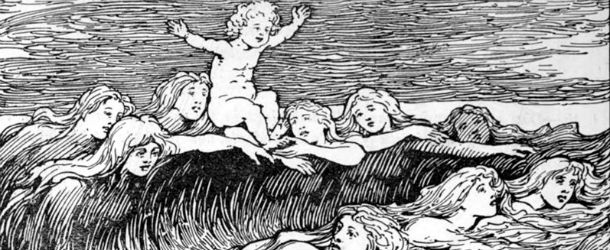Welcome to this, the third in a series of blogs looking at the Norse figures who lend their name to Viking River Cruises’ extensive fleet of Viking Longships. As I explained in the last blog, we’re working through the ships alphabetically, so this time, I’m going to take a look at the history behind Atla.
Who was Atla?
Very appropriately, in mythology, Atla is a giantess and a Norse goddess of water. When translated, Atla means ‘Fury’, one of the words used poetically to describe the characteristics of the ocean.
More about Atla
 In the first blog in the series I looked into the history of Aegir, Norse god of the Sea and as it turns out, he’s Atla’s father and Ran, the goddess of the sea, is her mother. Atla was one of the nine wave maidens who lived at the bottom of the ocean.
In the first blog in the series I looked into the history of Aegir, Norse god of the Sea and as it turns out, he’s Atla’s father and Ran, the goddess of the sea, is her mother. Atla was one of the nine wave maidens who lived at the bottom of the ocean.
Like her eight sisters, Atla was very beautiful and upon seeing the maidens sleeping on the shore, Odin himself married all of the sisters at once and gave birth to Heimdal, who was the guardian of the all the Norse gods.
Along with her sisters, Atla was responsible for overseeing the World Mill, which is what is responsible for bringing both fertility and harmony to the world.
Interesting facts
It is believed by some that Atla along with her sisters was responsible for the legend of mermaids. Sailors would ensure that they were on good terms with these goddesses of the ocean to ensure them safe passage and mermaids became a pictoral representation of the goddesses.
Atla and her sisters are referred to as both the nine daughters of Aegir and the Nine Mothers of Heimdallr, though some believe that they are in fact two different traditions, as there are two different sets of names attributed to them. The names differ depending on whether you are reading poetry or prose, however, so personally, I think the two sets of sisters are one of the same!
Atla’s son Heimdallr has since been immortalised Hollywood style, having appeared in both Thor movies, in which he was portrayed by Idris Elba.



